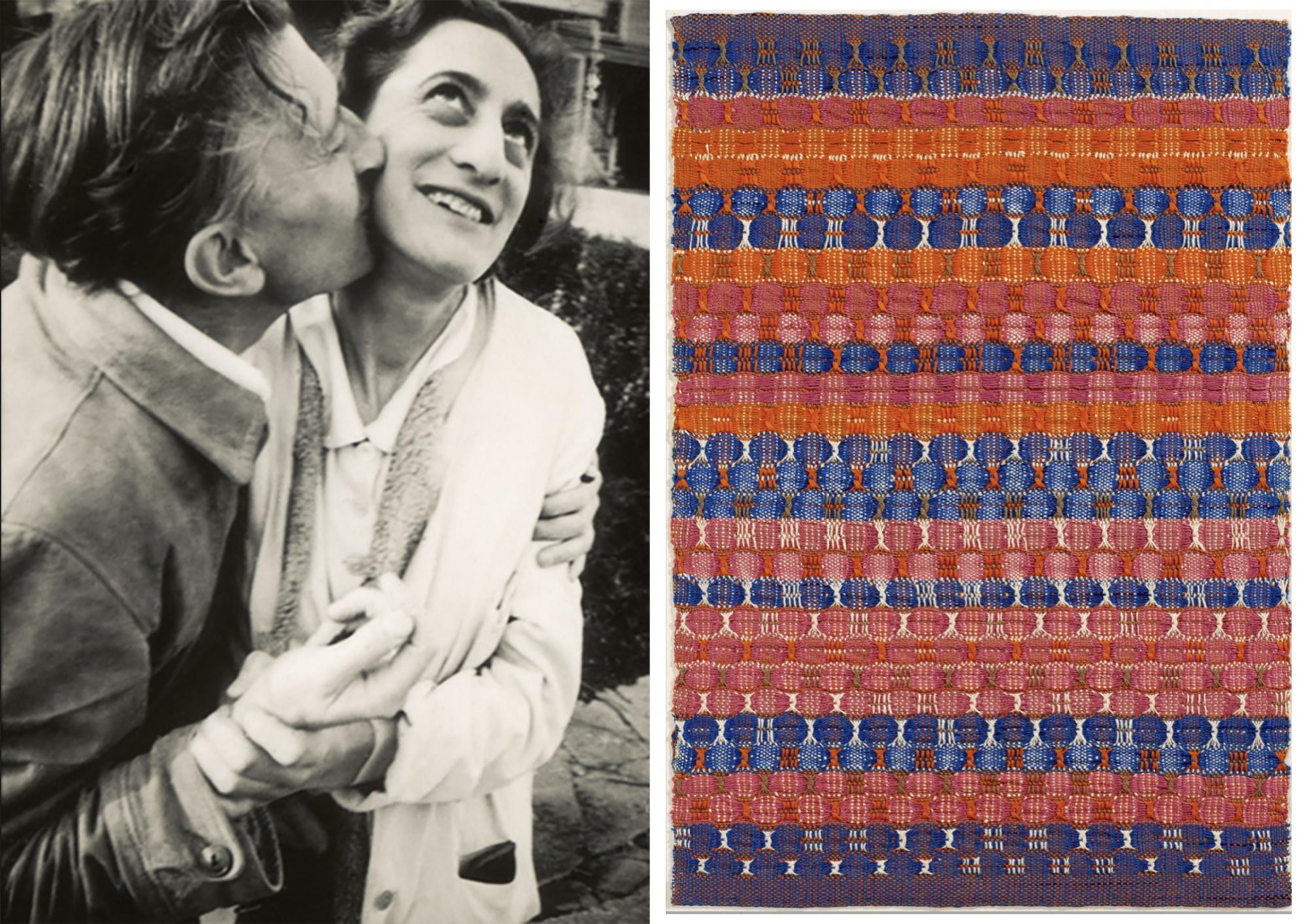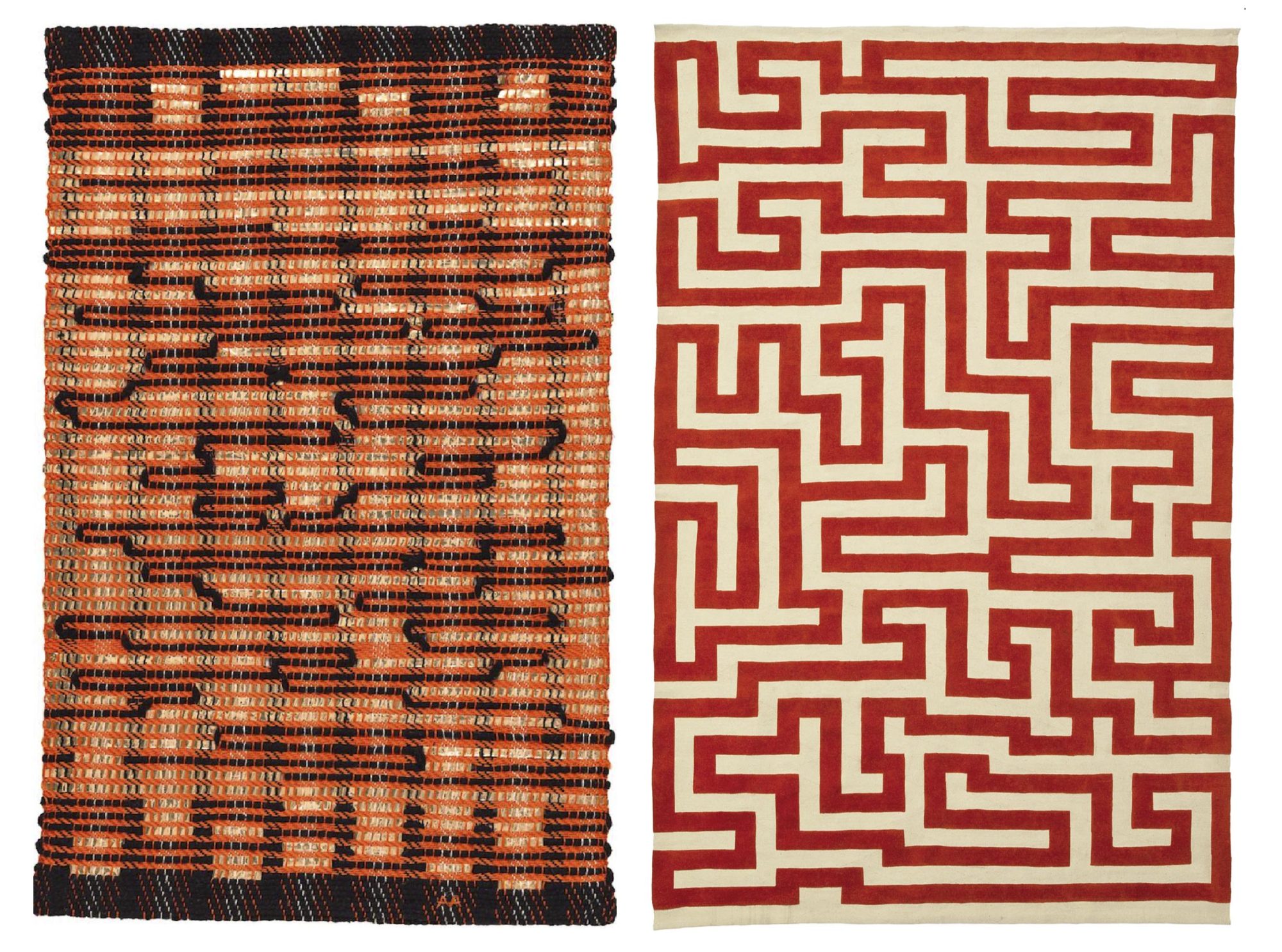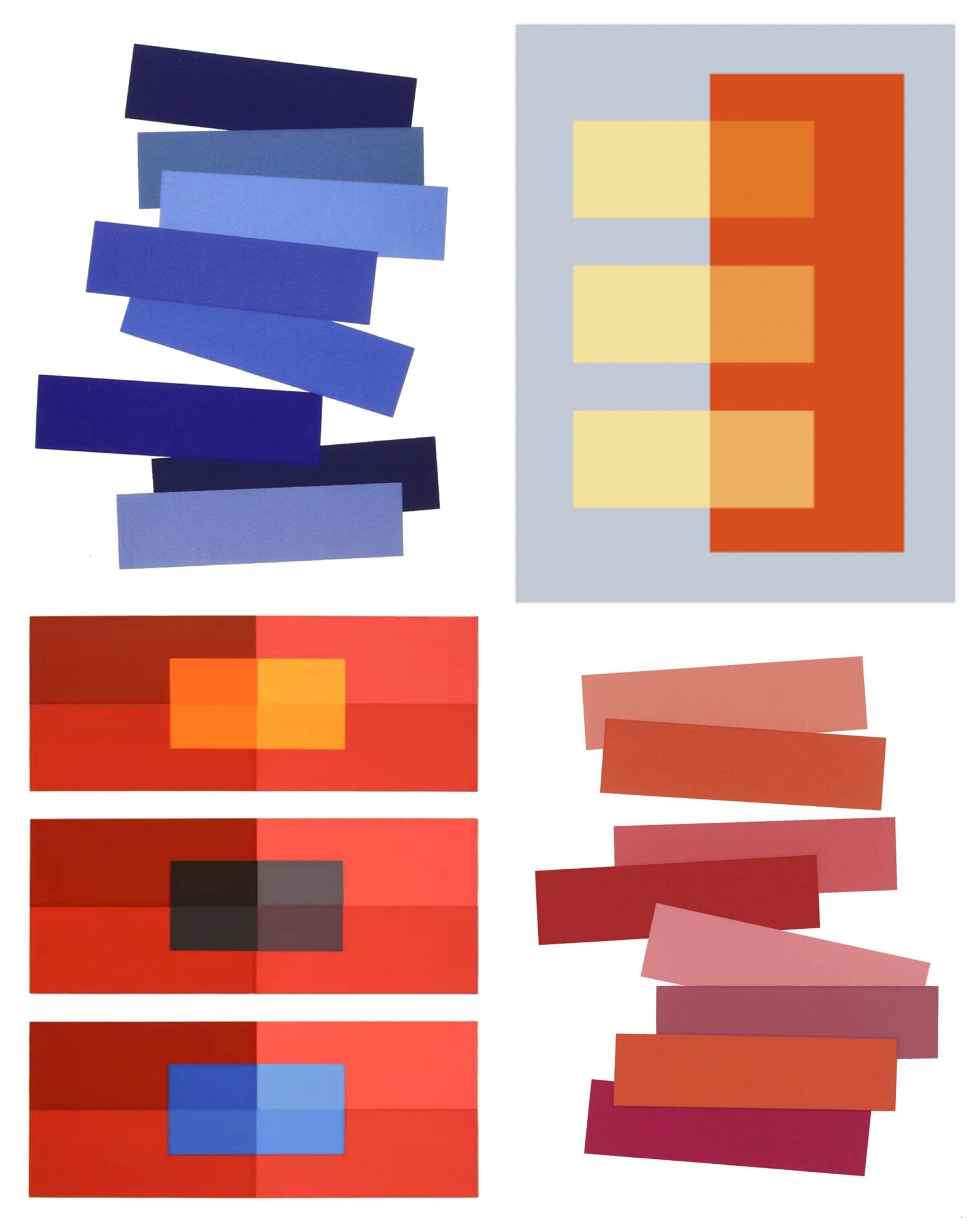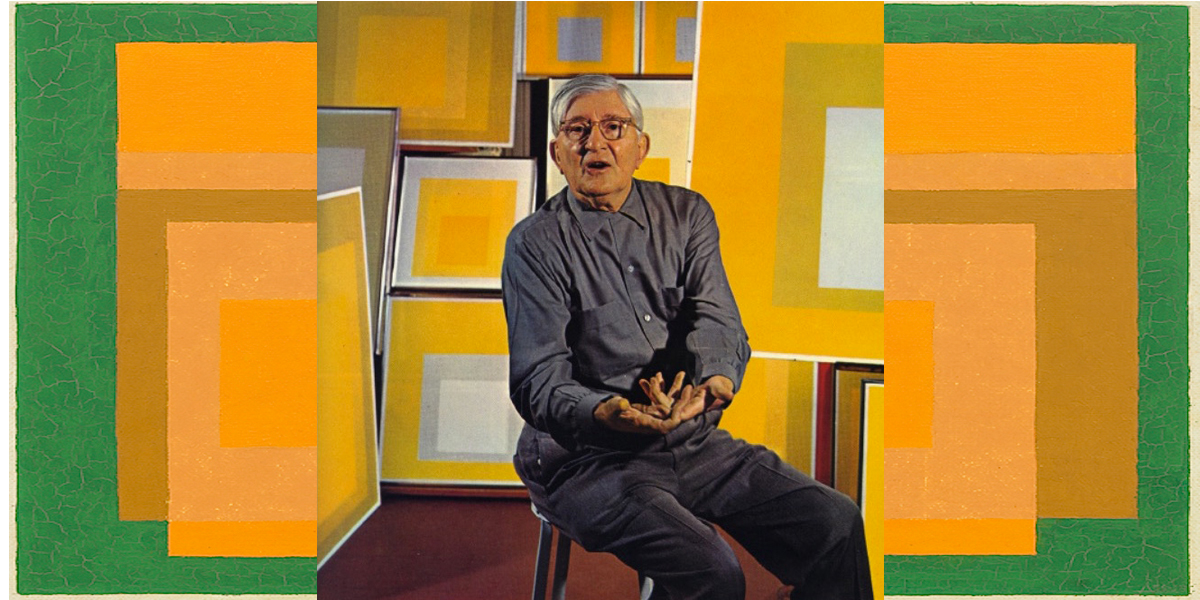Colour Masters: Josef and Anni Albers and Modern Art Rugs Design
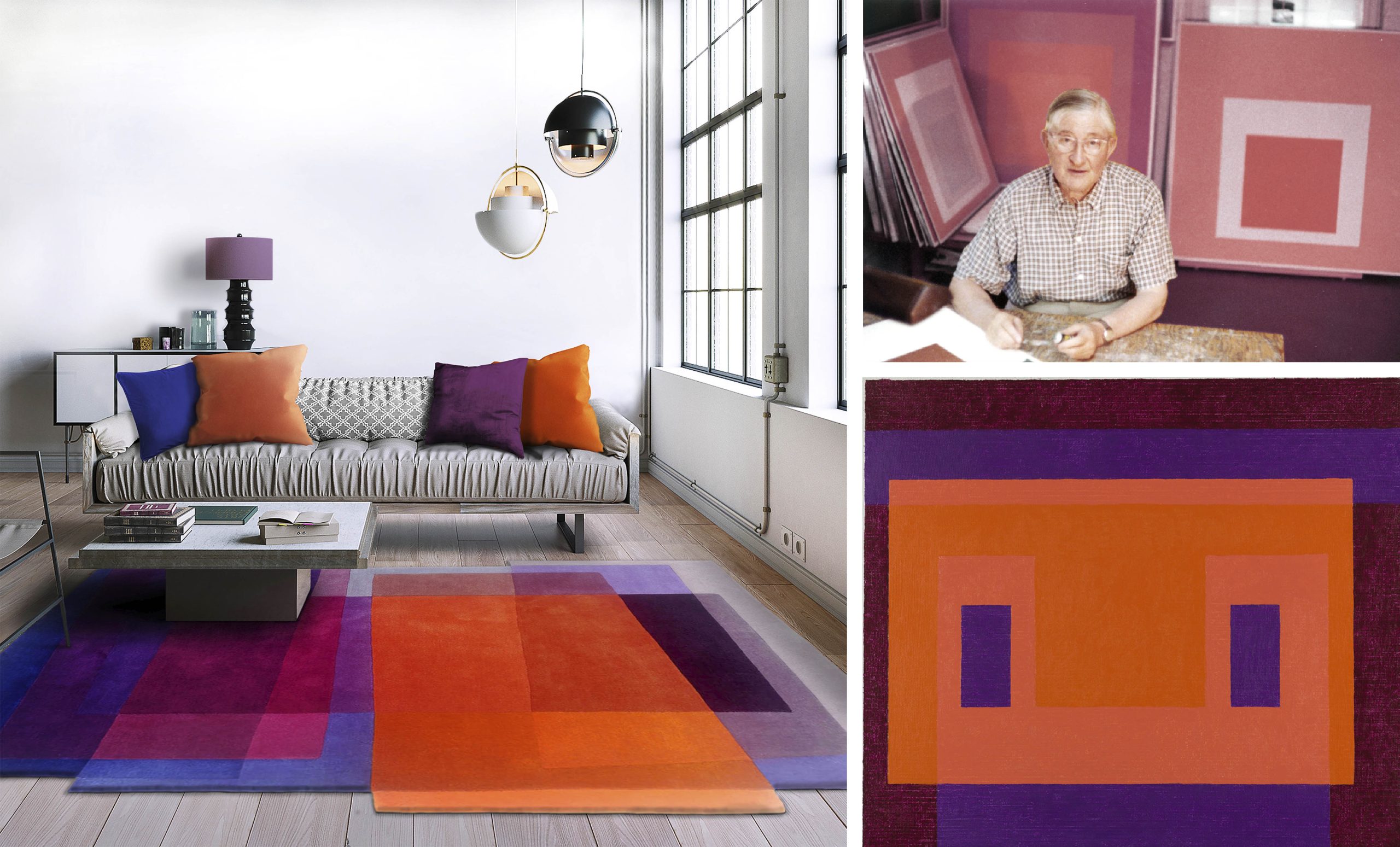
Josef and Anni Albers’ pioneering work in colour theory, weaving, and textile design impacted the art world forever, from art education to interior design.
The couple helped bridge historic techniques and modern design. Both Josef and Anni created texts that are still used in classrooms over 50 years later. And Sonya’s art rugs draw on their work in colour theory and weaving.
Who was Anni Albers?
Born in 1899 in Berlin, Germany, Anni Albers eventually became one of the most influential textile designers of the 20th century, although initially her work was overshadowed by her husband’s work.
In 1922, she began attending the Bauhaus, an influential art and design school. She was discouraged from taking certain classes as she was a woman but found her way to textile art. It was also here that she met her husband, Josef Albers, a prominent colour theorist and fellow design artist.
The Albers fled to America when the Bauhaus closed in 1933 after pressure from the growing Nazi party in Germany. It was here that they led the art program at the newly opened progressive Black Mountain College (founded by John Andrew Rice), a holistic learning school which emphasised the importance of integrating art into liberal art curriculums. The school went on to produce many notable artists, especially fabric design artists, but closed in 1957, after just 24 years. Interesting alumni from Black Mountain college include: Robert Rauschenberg (painter and graphic artist), Kenneth Noland (one of the best-known American Colour Field painters), Robert De Niro (American abstract expressionistic painter and father of actor Robert De Niro!), John Wieners (poet) and Kenneth Nelson (sculptor and artist).
Though Anni Albers originally entered school to study painting, she found her niche in textile art. Drawn to fabrics, she grounded her work in ancient weaving practices, focusing on ancient Pan-American, Peruvian, and Mayan weaving techniques which she incorporated in her work. She later thanked her predecessors: “To my great teachers, the weavers of ancient Peru.”
When Anni Albers first began working with textiles, the loom was mainly for craftsmen, but she focused on using this mechanism to create her now highly sought after art. Through Anni’s work and changing perceptions in the 20th century, loom weaving became an acceptable art medium.
Anni Albers also focused on combining these ancient weaving loom techniques with her modern designs. She was at the forefront of the Modernism Movement and pushed this 20th century design trend in new directions while maintaining its ties to the past.
Through weaving, Anni was able to reconnect with ancient weaving techniques for use in modern fabric design, pushing the boundaries of traditional design, and over time she established herself as one of the most influential modern designers. Anni’s legacy of innovation and technique has been an inspiration to Sonya and our design team and is seen in many of our rug designs, most notably the After Albers rugs.
Who was Josef Albers?
Born in 1888 in Germany, Josef Albers became one of the most influential teachers of visual arts and the most notable colour theorist of the 20th century.
When Josef began attending the Bauhaus, he was a student of the famed colourist Johannes Itten and focused on stained glass making. It was in this work that he expanded his knowledge and theories on colour coordination.
He became a professor at the Bauhaus school where he met his wife, Annie Albers, and fled with her to America as the Nazi party gained control of Germany.
Once in America, he and Anni taught art at the experimental Black Mountain College, Josef teaching painting. He later moved on to become the head of the design program at Yale during the 1950s.
While at Yale, he taught his students the colour theory he had developed during his years at the Bauhaus. Based on their responses, critiques, and creations, he gathered his comments and began writing his seminal work, Interaction of Color. The book was published in 1963 and is still in print over 55 years later.
Interaction of Colour includes ten colour studies, many created by his students, with explanation of the theory behind the images written by Albers. He focused on colour relativity, temperatures, and intensity, vibrating and vanishing boundaries, reversed grounds and the illusion of transparency.
Albers also observed how different colour combinations of the colour wheel can affect mood and how use of various shades of one colour can invoke calming feelings.
The book was considered revolutionary by the design world when first published and remains one of the most highly regarded books worldwide on colour theory and, being used in classrooms worldwide today and continuing to mould and inspire.
The influence of Josef Albers’ work, particularly with colour transparency, is a theme that runs through Sonya’s colour work which she likes to describe as her ‘colour experiments’. The way the eye registers a colour is continually influenced by the tones and shapes adjacent to it. Whilst playfully experimenting with colour and shape Sonya continues to find this inter-action of colours to be a never ending source of inspiration. I am fascinated by the potency of colour and the unlimited range of combinations that can be achieved, Sonya says.
Josef and Anni Albers’ legacy in Sonya’s rug designs
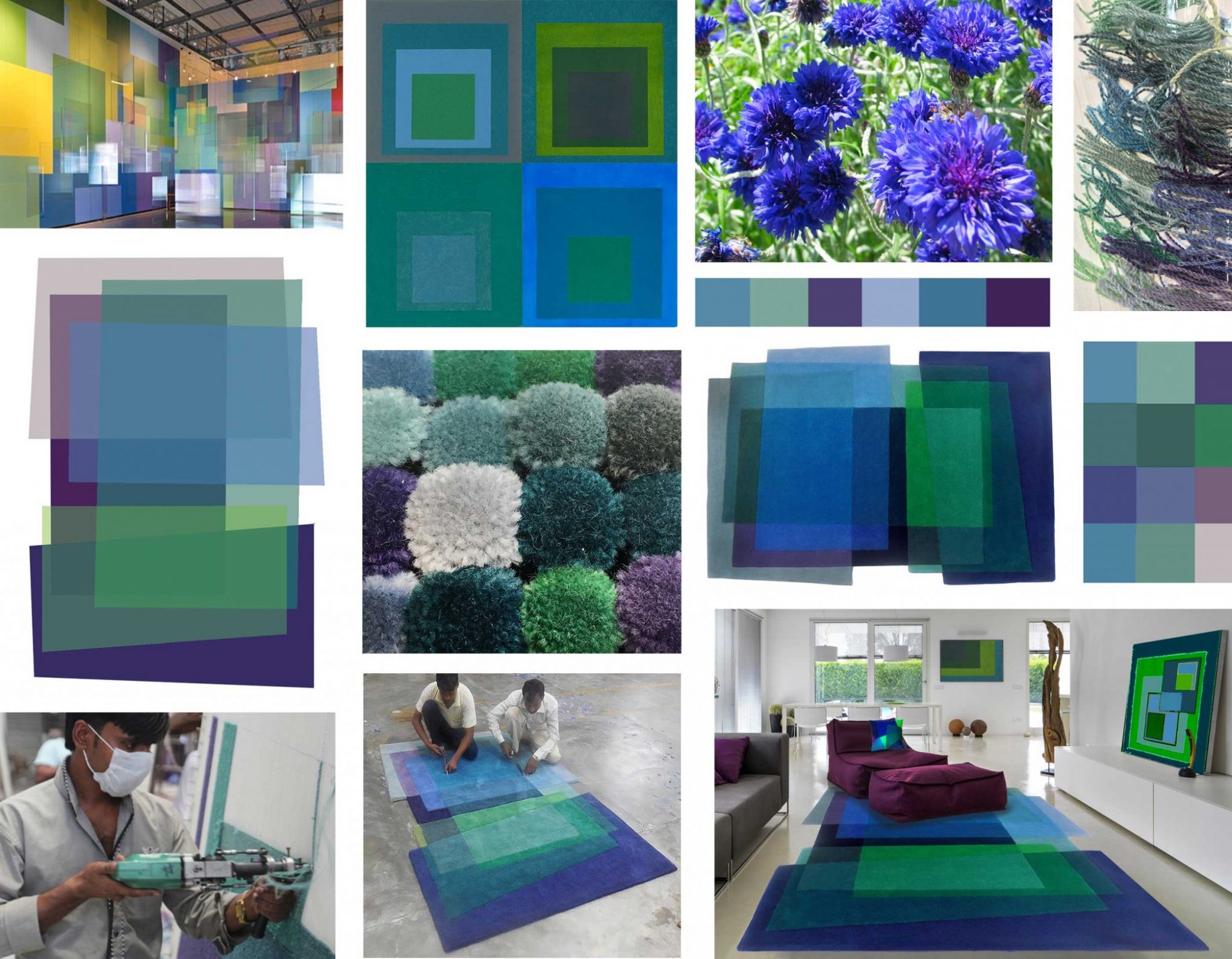
Inspiration and creation of the After Albers Cornflower Rug by Sonya Winner
Sonya continues to draw inspiration from the world around her in the creation of new rugs that are designed to add inspiration, trigger emotion and create uplifting, yet comforting spaces.
Sonya has taken inspiration from Josef Albers’ colour work, especially in utilising different shades from the same family of colours, as seen in Josef’s prolific series Homage to the Square. The design resulted from these colour experiments, such as the Jellybean, After Albers and Landscape rugs, create a dynamic link between bold design and soothing colour, resulting in rugs that promote a tranquil and calm atmosphere.
Like Anni Albers’ work – Sonya’s endeavours to harness the best possible natural yarns, such as New Zealand wool and Chinese silk, for translating her designs into pieces of floor art. Through the beauty of traditional weaving techniques from weavers in rural communities in India and Nepal she connects the old techniques with modern designs, resulting in visually striking pieces with various layers of meaning.
The After Albers Rug
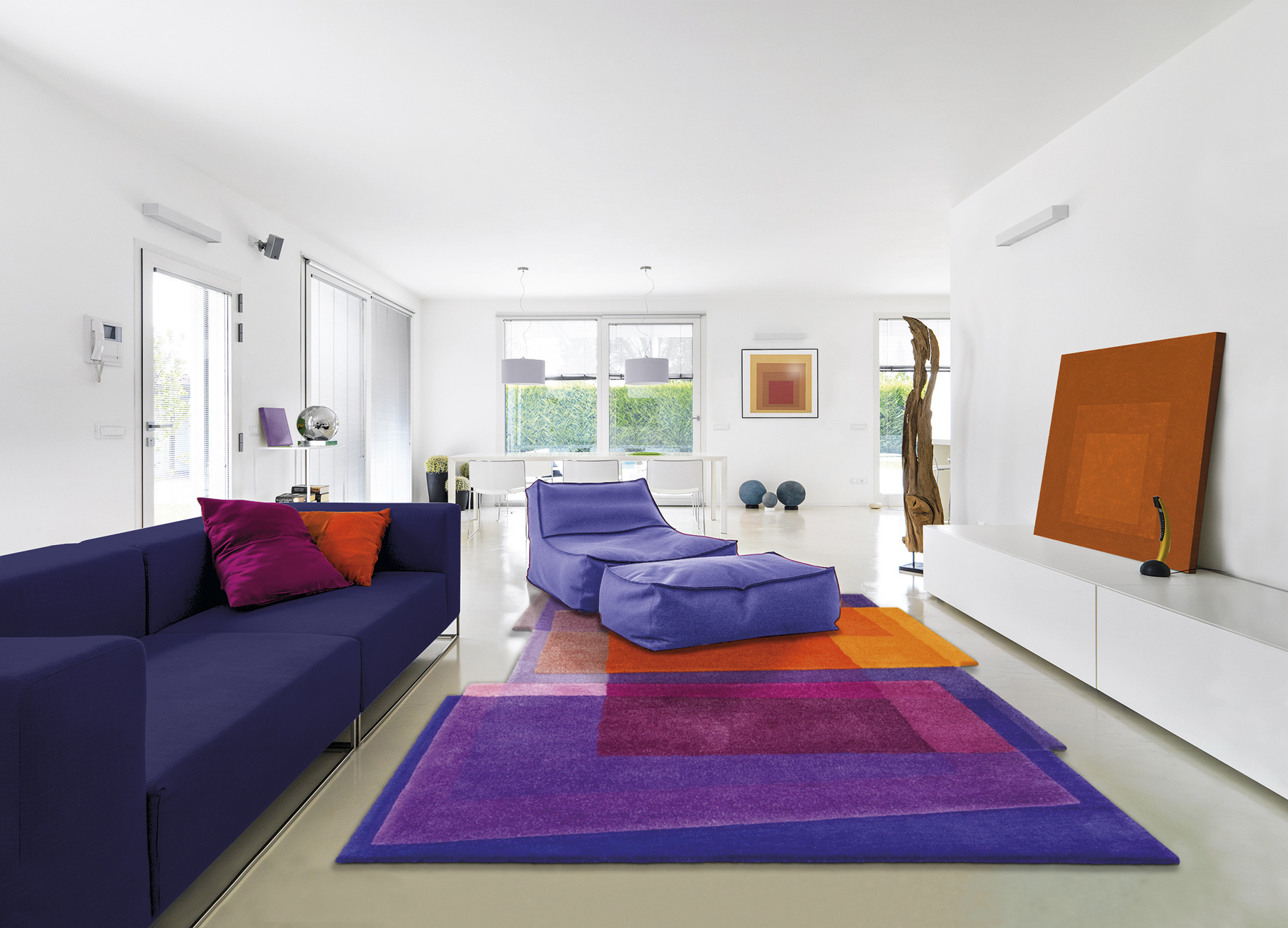
After Albers Deep Rug by Sonya Winner
Sonya’s inspiration from both Anni and Joseph is most prominently displayed in the After Albers rugs. This design features clear, overlapping squares and colours chosen to flow perfectly together. The “Cornflower” colour version is made with striking blues and greens, while the “Deep” colour version is woven in rich purples, pinks, ochres and oranges. These can be seen online or in person at our London Showroom, along with other rugs from Sonya’s striking rug collection.
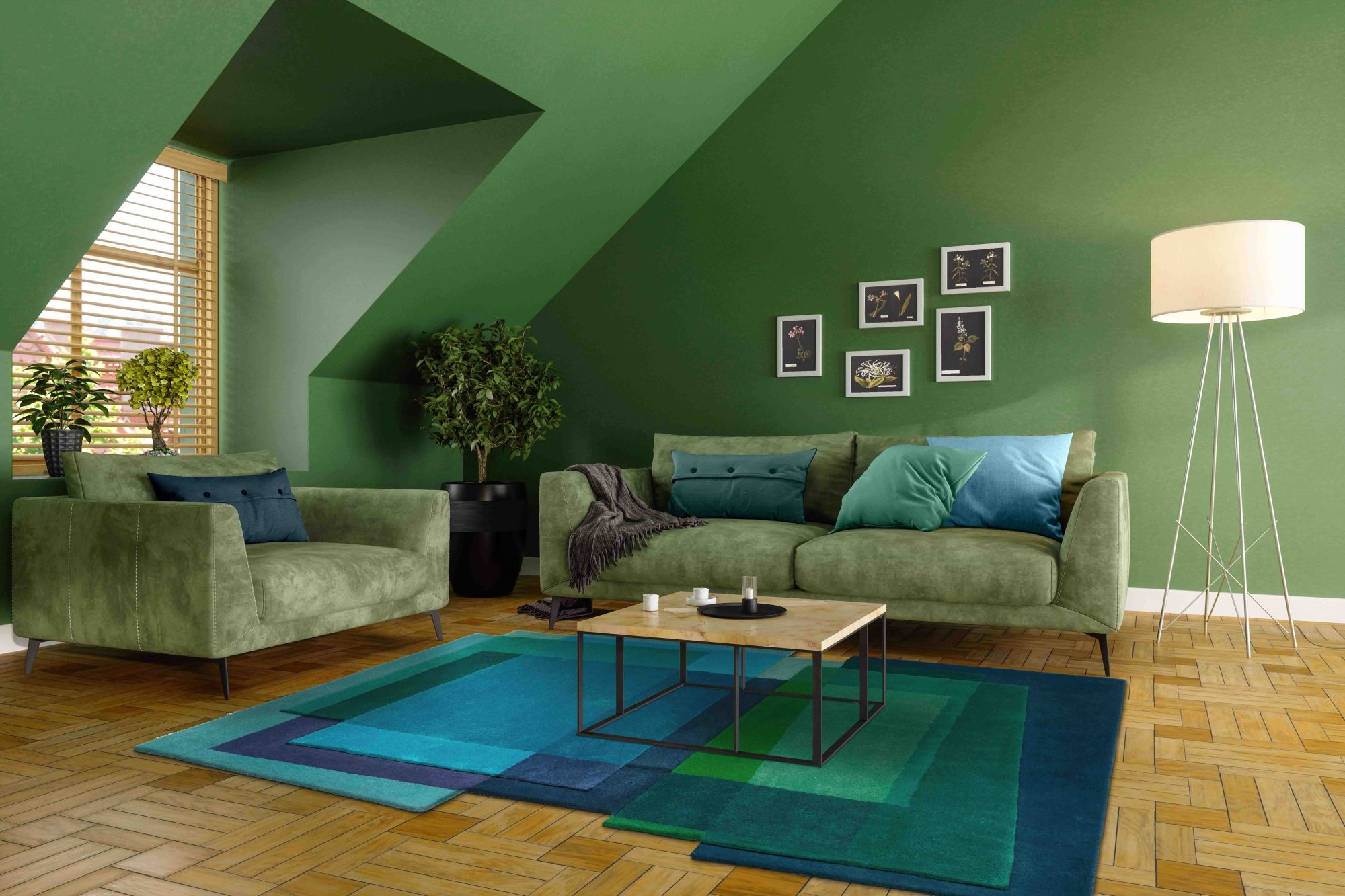
After Albers Cornflower Rug by Sonya Winner
Exhibition
Want to know more about the work of Josef and Anni Albers? Do take a look at the Albers Foundation and the following exhibitions in conjunction with the foundation:
2021 New York
Whitney Museum of American Art, Making Knowing: Craft in Art, 1950–2019. Open 22 November 2019–February 2022.
Museum of Modern Art, Artist’s Choice: Yto Barrada—A Raft. Open 8 May 2021–9 January 2022.
Museum of Modern Art, Automania. Open 4 July 2021–2 January 2022.
2021 Fargo, North Dakota
Plains Art Museum, Even Light Itself: Highlights and Recent Acquisitions from the Collection. Open 1 May 2021–10 September 2022
2021 San Francisco
Catharine Clark Gallery, Open Field: Nine Artists Respond to the Ideals of Black Mountain College. Open 5 June–11 September 2021
2021 Lexington, Kentucky
University of Kentucky Art Museum, Coloring. Open 10 August–11 December 2021
These new books may also be of interest:
Josef Albers: Messico 1935/1956 features never-before-published photographs taken during Anni and Josef’s travels in Mexico.
Anni & Josef Albers: Equal and Unequal by Nicholas Fox Weber is the first monograph to celebrate the rich creative output and beguiling relationship of these two masters.
Take a look on our website to see the After Albers and more art rugs inspired by the Albers couple!

